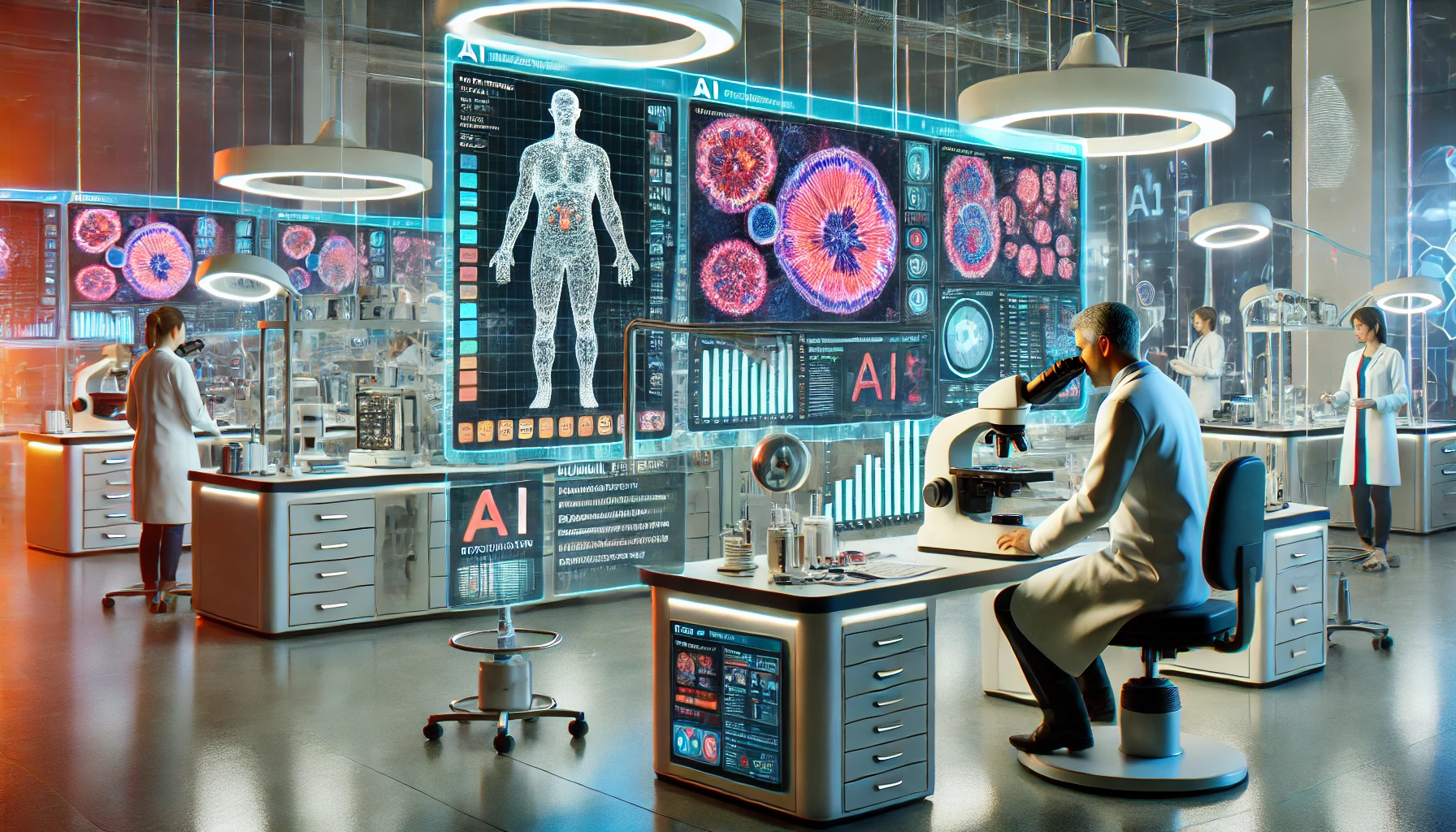AI in Pathology: How Algorithms are Outpacing Human Experts in Analyzing Medical Images

The New Age of Medical Diagnostics
Imagine this: a world where artificial intelligence outpaces human experts in the diagnosis of complex diseases, providing rapid and accurate analysis of medical images. Sounds futuristic, right? Well, the future is now, and it’s happening in the world of pathology. AI-powered systems are transforming how we interpret medical images, and they’re doing it faster and often more accurately than human pathologists. The algorithms are advancing at lightning speed, and the benefits are clear: fewer diagnostic errors and quicker results.
How AI is Beating the Experts
It may sound like something out of a sci-fi movie, but AI in pathology has already made incredible leaps forward. Thanks to machine learning, computers are now capable of processing vast amounts of data to detect patterns that even seasoned pathologists might miss. And while you may think human intuition gives doctors the upper hand, algorithms can analyze images with pixel-level precision, leaving no stone—or should we say, no cell—unturned. Studies show that these AI systems can reduce diagnostic errors by significant margins, providing better patient outcomes.
Training Algorithms to See What We Can’t
How does AI get so good at analyzing medical images? It all comes down to training—and not the kind of training you'd see in a Rocky montage. These algorithms learn by reviewing thousands, sometimes millions, of images. Over time, they become more adept at spotting abnormalities, flagging potential problems, and even predicting disease progression. They don’t take coffee breaks, they don’t get tired, and they don’t overlook that one crucial detail hiding in the corner of a slide.
Real-Life Examples of AI in Action
One shining example is in breast cancer detection. AI has been shown to match or even outperform radiologists in identifying tumors in mammograms. Another exciting development is AI’s role in analyzing tissue samples for diseases like colorectal cancer and even identifying conditions in pediatric patients that require immediate attention. These systems are trained to pick up on patterns that can be easily overlooked by the human eye, offering a second opinion—or in some cases, the only opinion that matters.
Reducing Diagnostic Errors: A Life-Saver
Let’s face it, humans are fallible. Even the most experienced pathologists can have off days. AI, on the other hand, doesn’t suffer from these human limitations. With the ability to process medical images quickly and with incredible accuracy, AI is helping reduce the likelihood of diagnostic errors, which is a game-changer in medicine. Imagine a system that provides a second set of ‘eyes’ to review critical scans, thereby reducing the chances of a misdiagnosis. It’s not just science fiction anymore—it’s happening in real-time.
Doctors and AI: A Collaborative Future
Now, before you start worrying about robots taking over, let’s clarify something: AI is here to assist, not replace. Pathologists still play a critical role in interpreting results, making treatment decisions, and providing compassionate care. What AI does is provide a tool to enhance their capabilities, allowing doctors to focus on the most complex cases. It's like giving pathologists a superhero sidekick—sure, the sidekick does the grunt work, but it’s the human expert making the final call.
Challenges Ahead
Of course, no technology is without its hurdles. AI in pathology still has to overcome issues related to data privacy, standardization, and the cost of implementing these systems. There's also the question of how quickly medical professionals can adapt to using these new tools. After all, the integration of AI into the medical field is a balancing act that requires both technological advancement and human acceptance.
What Does the Future Hold?
Looking forward, AI’s role in pathology is only expected to grow. As more and more medical facilities adopt these advanced systems, the technology will likely become standard practice, helping to streamline diagnostic processes and make healthcare more efficient. Imagine a world where patients receive diagnoses in minutes instead of days. The future is bright, and it’s coming fast.
Are We Ready for AI to Take the Lead?
While AI in pathology is rapidly advancing, it still relies on a partnership with human expertise. As we embrace this technological revolution, the question remains: are we ready for AI to take the lead in diagnosing the most critical medical conditions? And more importantly, would you trust an algorithm with your life?



